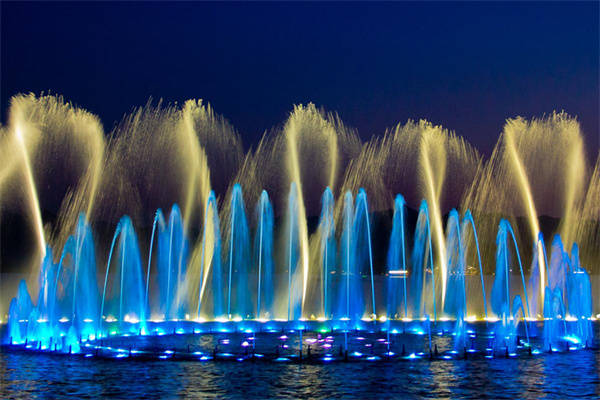The Principle and Composition of Musical Fountains
Music fountains, also known as dancing fountains, are a fascinating blend of art, technology, and engineering. These fountains integrate water, light, and sound to create captivating performances that delight audiences. The principle behind music fountains is relatively straightforward but requires precise engineering and sophisticated technology to execute flawlessly. This blog explores the fundamental principles and composition of music fountains, revealing the magic behind these spectacular displays.
At its core, a music fountain operates on the synchronization of water jets with music and lights. The main principle involves the following components:
Music Analysis: The music fountain system analyzes the music track to determine its beat, rhythm, and intensity. Advanced software breaks down the audio into manageable segments, identifying the tempo, frequency, and amplitude of the music.
Water Jet Control: Based on the music analysis, the system controls the water jets. Different types of nozzles create various water effects, such as streams, sprays, and bursts. The height, direction, and shape of the water jets are synchronized with the music, creating the illusion that the water is “dancing” to the beat.
Lighting Synchronization: Lights, often LEDs, are synchronized with both the music and the water jets. The lighting effects enhance the visual experience, changing colors, intensities, and patterns in harmony with the music and water movements.
Real-Time Control: The entire process is controlled in real-time by a central computer system. This system processes the music and coordinates the actions of the water jets and lights to ensure seamless synchronization.
Composition of Music Fountains
The composition of music fountains involves several critical components that work together to create the overall effect. These components include:
Water Reservoir and Pumps: A large water reservoir supplies the water needed for the fountain. High-capacity pumps propel the water through the system, providing the necessary pressure to create dynamic water displays.
Nozzles: Various nozzles are used to create different water effects. Common types include:
Stream Nozzles: Produce smooth, continuous streams of water.
Fan Nozzles: Create a fan-shaped spray.
Aerating Nozzles: Mix air with water to produce frothy, aerated jets.
Rotating Nozzles: Spin to create circular patterns.
Lights: LED lights are the most common choice for music fountains due to their energy efficiency, durability, and ability to produce a wide range of colors. These lights are often placed underwater and around the fountain to illuminate the water jets.
Audio System: A high-quality audio system is essential for playing the synchronized music. Speakers are strategically placed to ensure that the music is clearly heard throughout the viewing area.
Control System: The heart of a music fountain is its control system. This includes the computer software that analyzes the music and controls the pumps, nozzles, and lights. The control system ensures that all components work in harmony, creating a seamless and captivating performance.
Sensors and Feedback Mechanisms: Some advanced music fountains incorporate sensors and feedback mechanisms to adjust the performance in real-time. For example, wind sensors can detect changes in wind speed and direction, allowing the system to adjust the height of the water jets to prevent water from spraying outside the designated area.
Design and Programming
Creating a music fountain show requires careful design and programming. Designers and engineers work together to choreograph the water, light, and music to create a cohesive and engaging performance. This process involves:
Music Selection: Choosing the right music is crucial. The selected tracks should have clear beats and dynamic variations to make the water and light effects more impactful.
Choreography: Just like a dance performance, music fountains require choreography. Designers plan the movements of the water jets and lights in sync with the music. This involves detailed programming and testing to ensure perfect synchronization.
Testing and Calibration: Before a music fountain show is presented to the public, extensive testing and calibration are necessary. This ensures that all components function correctly and that the performance is visually and aurally pleasing.
Conclusion
Music fountains are a testament to human creativity and technological advancement. By combining the natural beauty of water with the artistic elements of music and light, these fountains create mesmerizing displays that captivate audiences worldwide. Understanding the principles and composition of music fountains enhances our appreciation of the intricate work behind these enchanting performances. Whether it’s a small garden fountain or a grand installation in a city square, the magic of music fountains continues to inspire and delight people of all ages.

